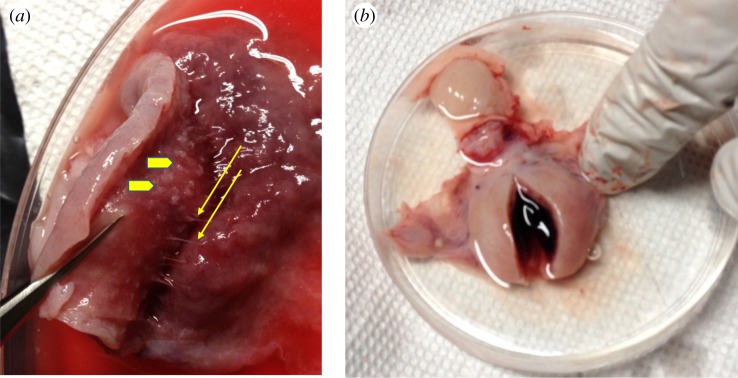Figure 2.
The need for haemostasis in a minimally invasive haemochorial animal D-. novemcintus, which belongs to the eutherian clade most distantly related to humans. (a) The minimally invasive placenta of armadillo in third month gestation. The thin threads indicated by yellow arrows are the projections of the placenta entering the endometrium to the left. Arrow heads indicate penetration. The invasion through haemochorial is minimally destructive. (b) Postpartum uterus of armadillo, showing copious coagulated blood in the uterine cavity, indicating the need for effective haemostasis.

